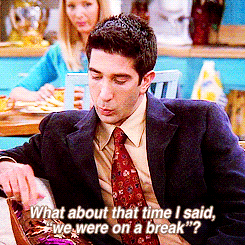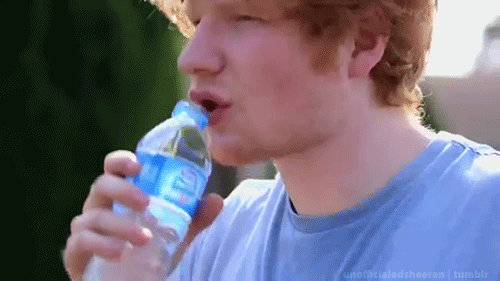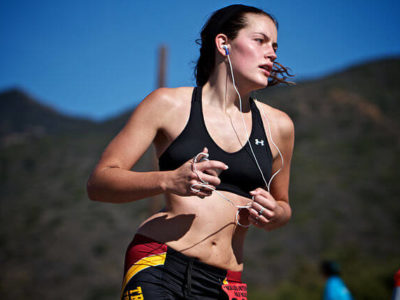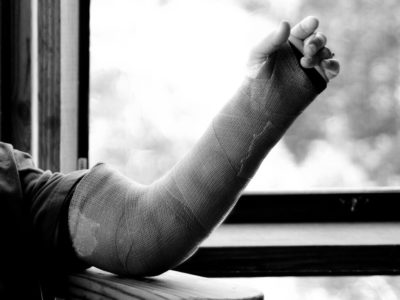You check the temp and it’s way over 70 degrees, which signals your yearly summer wardrobe swap. Goodbye thick, wool sweaters–hello high-waisted jean shorts. You go to the cobwebbed corner in your closet where that one pair of short shorts you absolutely love hides. You put one foot in and then the other, but then “Oh Snap!” the shorts won’t snap closed. You immediately regret all the times you added guacamole to your Chipotle burritos and drank too many long island ice teas during the school year. Never fear because you still have time to get your ideal beach body ready to attract the hotties in the water.
Walk It Out

Buses and cars transport you from point A to B, but both methods lead to sitting on your butt. As simple as it sounds, walking around campus or to the grocery store boosts fitness levels. Julie Andrews, registered dietician and chef with the University of Wisconsin Health, suggests walking. “A lot of people use fitness trackers, whether that is Fitbit or a pedometer or something to keep track of their steps and aim for 10,000 a day, which is the recommendation,” Andrews said. Grab a buddy and compete for who can have the most steps that month to help keep up the motivation. The loser has to take the winner out to dinner!
Slow and Steady Wins the Race

Getting active and fit takes time. You can’t go from zero to Michael Phelps in one day. Before you begin working out, check if your university offers free access to a gym or if a nearby gym gives student discounts. Andrews recommends getting started slowly when working out. “I would definitely start small, so starting with just going on a treadmill or taking a class a week,” Andrews said. Instead of trying to sprint as fast as possible on a track, alternate between walking and light jogging. Eventually the more you continue, the easier it will be to run longer distances and sustain your workout.
Get Creative

Working out does not have to be an awful experience. If the idea of a traditional gym makes you anxious, try free videos online through YouTube or Fitness Blender to tailor fitness regimens in the comfort of your cozy apartment. UW-Madison senior Jared Rudolph recommends starting out with phone apps, DVD sets or even sessions with a personal trainer. “I knew nothing regarding proper techniques and how to be safe, so having someone tell me how to safely and efficiently workout was highly beneficial,” Rudolph said.
Turn your Netflix binging habits into a workout routine. Workout games kickstart your fitness level by combining an easy routine with something you love to watch. Are you obsessed with Orange is the New Black? Anytime Crazy Eyes does something crazy, you have to do 10 crunches. Do you need to find out what happens between Ross and Rachel on Friends? Then do 15 push-ups anytime they kiss and 10 jumping jacks whenever Ross says, “We were on a break!”
Do You Even Lift?

If the answer to that question was “no,” then you should get on that. According to Andrews, most people think cardio exercises like running and biking burns all the calories and fat away, but strength training helps with weight loss too. “The only way we can burn fat is if we build muscle, and that improves your metabolism,” Andrews said. The key to a successful fitness regimen is balance. Lift weights or take a strength training class a couple times a week and then the other days get your cardio in with Zumba, a spin class or a long jog on campus. Start by picking up lighter weight dumbbells or weights on a leg press and slowly transition into heavier weights. You’ll be chugging protein shakes in no time.
64 Ounces a Day Keeps the Doctor Away

Water makes up 60 percent of the human body, so as we sweat in the blistering hot sun by the pool or play beach volleyball, we need to keep replenishing that water supply. “A lot of times we think that we’re hungry when we’re actually thirsty,” Andrews said. Instead of grabbing handfuls of Cheetos, your body might crave a nice tall glass of ice-cold water. Shoot for 64 ounces of water a day to keep your body replenished and hydrated–your six pack will thank you later.
Major Key: Portion Control

Cut the days when you ate pints of ice cream for dinner and avoided broccoli or Brussel sprouts. Portion control helps regulate diets so the body receives all the required nutrients. Andrews suggests the USDA’s MyPlate method that says half of a dinner plate should be fruits and veggies, one quarter should be protein and the other quarter should be a grain or a starch. Are veggies not your thing? Then try hiding them into a standard pasta dish like lasagna. Simple switches like swapping in whole grain bread or plain Greek yogurt instead of sour cream helps improve diets and increase protein and fiber. Eating healthy does not mean completely cutting out sweets, candy and potato chips–it means eating more balanced portions.
You Need to Move It, Move It

Sometimes we feel like there’s not enough hours in the day to break a sweat, but being healthy doesn’t take hours and hours. Personal Trainer Ali McWilliams said to just move. Conquer the stairs instead of using the elevator or bike to class. “We all have the same amount of time in our days–it’s what we choose to do with it. What we value is what we spend time and money on,” McWilliams said.
Desk workouts also keep health enthusiasts active during the busy work week. Taking a break from the hefty pile of paperwork at your summer internship not only helps your mental health, but also physical. “People should be healthy, so they feel better and have more energy,” McWilliams said. “Being healthy affects all areas of your life.”



















